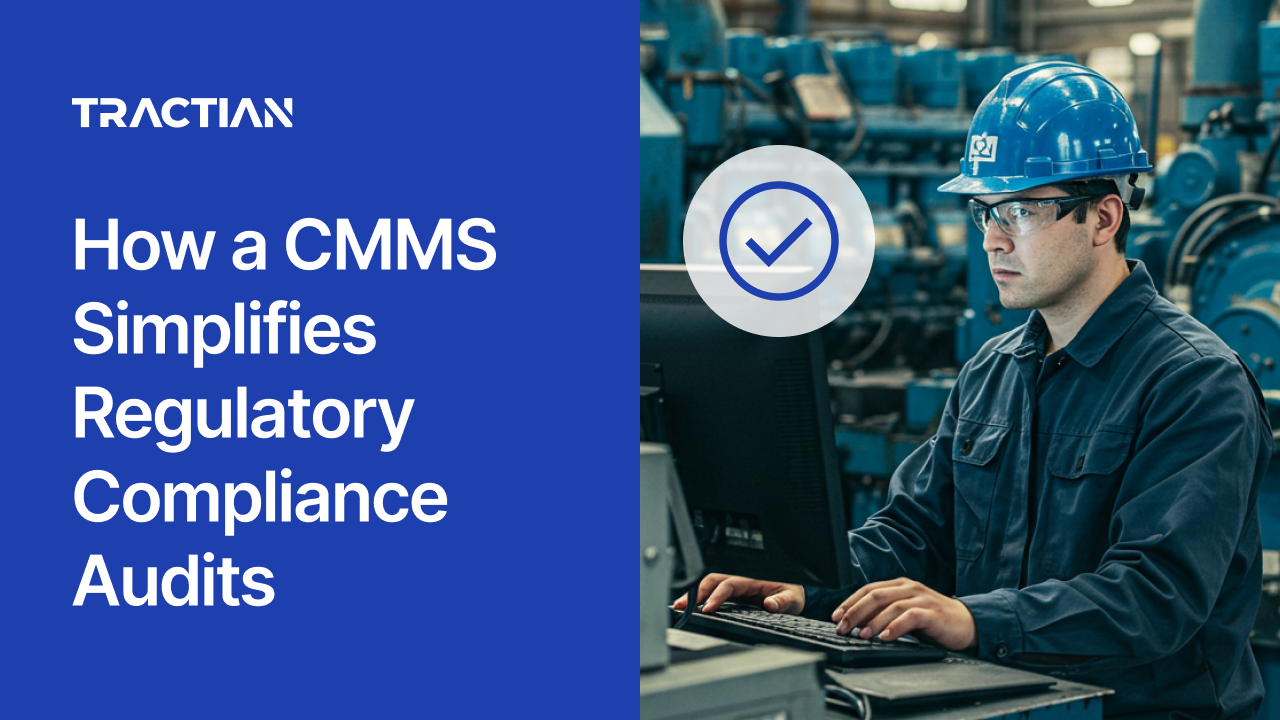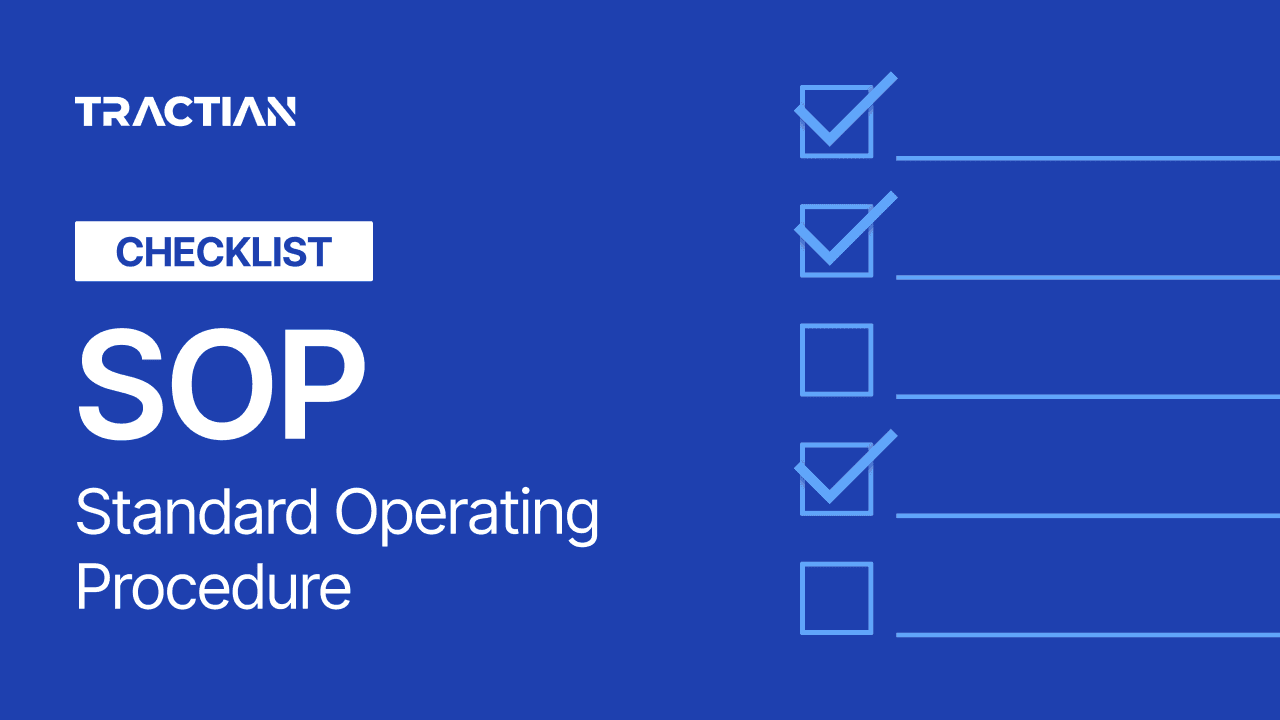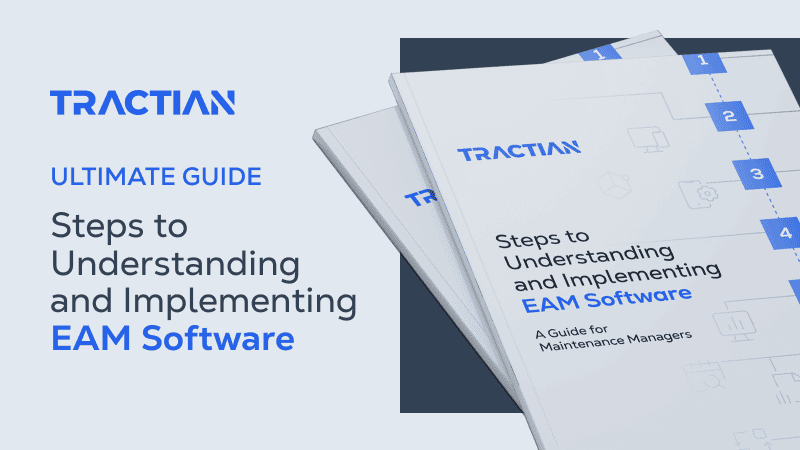In regulated industries, audits are a begrudgingly accepted routine. Yet, even though they’re expected, maintaining perfect audit readiness is a constant struggle for many organizations. A common pain point for these companies is continued reliance on paper-based records, inconsistent procedures, and disconnected maintenance activities. These make it harder to prove their compliance, even though the work is obviously getting done.
For organizations like these, a CMMS (Computerized Maintenance Management System) provides a welcome solution to this situation. When properly implemented, a CMMS embeds regulatory compliance into daily maintenance workflows, automates documentation, and gives teams real-time visibility over the activities that matter most during inspections.
Whether driven by FDA, OSHA, EPA, ISO standards, or customer-specific requirements, compliance audits no longer create headaches for those using a CMMS to simplify the compliance process.
In this article, we’ll show you how a CMMS can help your team with industrial regulatory audits, strengthen operational compliance, and ensure facilities stay inspection-ready without the last-minute scramble.
The Role of Maintenance in Regulatory Compliance
Inspectors consistently review how maintenance activities are documented, scheduled, and verified, as maintenance directly impacts equipment safety, environmental integrity, and product quality.
Regulations such as OSHA’s 29 CFR 1910, the FDA’s 21 CFR Parts 11 and 117, ISO 9001, and GFSI schemes all require documented proof that equipment is properly maintained, inspected at defined intervals, and operated within validated parameters.
Failures in maintenance don’t just trigger operational downtime, they can expose facilities to regulatory violations, safety incidents, and liability risks.
Specific maintenance activities typically tied to compliance include:
- Executing preventive maintenance (PM) on critical assets according to validated frequencies.
- Maintaining calibration records for sensors, instruments, and production monitoring equipment.
- Ensuring all maintenance actions on food-contact surfaces, pressure systems, or environmental controls are properly recorded and traceable.
- Managing corrective maintenance procedures, with documented root cause analysis (RCA) and corrective actions (CAPA) for significant equipment failures.
- Tracking technician certifications, retraining schedules, and task competency for regulated activities.
- Documenting equipment changes or upgrades through formal Management of Change (MOC) protocols when required.
In high-risk industries, regulators treat maintenance records as legal documents. For these auditors, this means that missing information, inconsistent work order histories, or undocumented corrective actions are viewed as direct threats to product safety, environmental compliance, and worker protection.
Challenges in Achieving Regulatory Compliance
Even facilities with robust maintenance programs often struggle to consistently meet regulatory compliance. The challenge isn’t just making the effort. It’s documenting, standardizing, and being able to prove it on demand and under scrutiny.
Most compliance efforts break down in these areas:
1. Disconnected Maintenance Records
When work orders, calibration logs, and SOP updates reside in multiple systems-or worse, on paper-it becomes challenging to compile a complete, time-stamped history during an audit. Missing information, undocumented corrective actions, or incomplete PM checklists can immediately trigger non-conformance findings.
2. Inconsistent Scheduling and Execution
Preventive maintenance schedules often drift due to production demands, staffing shortages, or system gaps. Without automated scheduling and escalation, critical PMs tied to regulatory compliance slip through the cracks, exposing facilities to audit failures and operational risks.
3. Lack of Real-Time Visibility
Without centralized, real-time dashboards tracking maintenance activities, facilities often operate reactively, only discovering compliance gaps after the work is overdue or improperly executed (i.e., more problems emerge downstream of the initial failure). Auditors expect live visibility into maintenance status, not retrospective reconstructions.
4. Manual Documentation and Human Error
Relying on technicians to manually record calibration readings, work order notes, and corrective action summaries increases the chance of errors, omissions, and inconsistencies. In regulated environments, “I forgot to log it” is not an acceptable defense.
5. Poor Version Control of SOPs and Work Instructions
Outdated or conflicting work instructions for maintenance tasks compromise both compliance and product safety. Facilities must demonstrate that maintenance teams are following the current approved procedures, with version-controlled documents accessible during audits.
6. Limited Traceability and Audit Trails
When an auditor requests the maintenance history of a critical asset, facilities should provide immediate access to time-stamped, signed-off records, rather than incomplete spreadsheets or fragmented notes. Missing audit trails can escalate minor findings into major citations.
How a CMMS Helps with Regulatory Compliance
A CMMS is a compliance control system. In facilities where regulatory readiness depends on traceability, validated inspections, and audit readiness, computer management software provides the operational infrastructure that manual methods cannot match.
Here’s how a CMMS directly strengthens regulatory compliance:
1. Centralized Maintenance Records and Audit Trails
A CMMS creates a single source of truth for all maintenance activities. Every work order, calibration task, inspection, and corrective action is time-stamped, technician-signed, and archived digitally.
During audits, facilities can immediately retrieve complete maintenance histories for any asset, including supporting documentation such as SOPs, calibration certificates, photos, and technician certifications.
With automated version control, historical records are preserved without risk of accidental overwrites or loss, ensuring full traceability that meets ISO, FDA 21 CFR Part 11, and GFSI documentation requirements.
2. Preventive Maintenance Scheduling and Compliance Enforcement
A CMMS automates the scheduling of preventive maintenance tasks based on validated intervals, whether driven by OEM specifications, regulatory mandates, or internal risk assessments.
Critical PMs tied to compliance (e.g., safety valve inspections, CIP cleaning cycles, sensor calibrations) are automatically escalated if they are overdue, thereby reducing the risk of missed regulatory obligations.
Additionally, work order templates enforce standardization across tasks, ensuring that maintenance activities are performed consistently and in accordance with approved procedures.
3. Real-Time Visibility and Compliance Dashboards
Maintenance managers and compliance officers gain real-time insight into open work orders, overdue PMs, calibration status, and asset risk profiles. And Dashboards and KPIs track compliance metrics continuously, even outside of audit preparation windows.
With this visibility, facilities can monitor preventive maintenance completion rates, overdue inspection trends, and the status of critical assets with immediate drill-down capabilities.
4. SOP Integration and Control
CMMS platforms like Tractian enable Standard Operating Procedures (SOPs) to be attached directly to work orders, inspections, and calibration tasks. Technicians are always executing against the latest version-controlled instructions, eliminating the risk of non-compliance due to outdated or inconsistent procedures.
Then, automatic alerts notify management when SOPs are updated, and version histories are maintained for audit review.
5. Risk Management and Incident Reporting
A modern CMMS supports integrated incident management, capturing safety events, equipment failures, and near misses.
Incidents can be linked to work orders and corrective actions (CAPA processes), providing a closed-loop system that satisfies regulatory expectations for risk identification, mitigation, and documentation.
Thanks to this, root cause analyses (RCAs) and risk assessments can be integrated into the maintenance workflow, directly tying operational failures to continuous improvement plans.
6. Technician Training and Certification Tracking
Regulators expect facilities to prove that only qualified personnel perform regulated maintenance activities. A CMMS links technician profiles to their certifications, training records, and competency validations.
And if a work order requires a technician with confined space certification, food safety training, or electrical licensing, the system enforces assignment rules accordingly, blocking unauthorized task execution.
7. Automated Audit Reporting
When audit time comes, a CMMS eliminates the scramble. Facilities can generate time-stamped maintenance histories, calibration logs, incident reports, and compliance dashboards instantly and accurately.
This readiness not only speeds up audits but also builds confidence with regulators and third-party inspectors, demonstrating operational discipline without reactive, last-minute efforts.

CMMS Features That Support Compliance
A CMMS provides the specific tools that maintenance teams need to enforce regulatory compliance on a daily basis. From real-time documentation to audit reporting, these features transform maintenance operations into a fully traceable, defensible system.
Below are a few of the features that strengthen compliance readiness:
Checklists and Tools That Streamline Real-Time Documentation
Real-time documentation is critical during audits. A CMMS enables technicians to complete digital checklists, input calibration results, and record inspections directly from a mobile device or workstation, while the task is still in progress.
Standardized forms and templates ensure every critical detail is captured, minimizing variability between technicians and removing the risk of incomplete or missing records.
By eliminating the need for manual transcription or post-task paperwork, the system ensures that maintenance activities are documented immediately, accurately, and with complete traceability.
Centralized Access to Critical Information
Preparing for an audit becomes chaotic when maintenance documentation is spread across spreadsheets, binders, and legacy systems. A CMMS centralizes all maintenance data-work orders, SOPs, calibration records, corrective actions, and training certifications-into a single, organized platform.
Technicians, supervisors, and auditors can quickly retrieve complete maintenance histories by asset, time period, or task type, without having to dig through fragmented records. This centralized structure ensures that facilities can demonstrate compliance without delays or missing documentation during inspections.
Better Adherence to Regulatory Standards
A CMMS enforces standardization across maintenance operations. Work order templates are configured to align with regulatory procedures, including fields for mandatory checks, sign-offs, and references to validated SOPs.
By guiding technicians through approved steps and requiring completion of all fields before task closure, the system ensures that maintenance activities meet documented compliance requirements without deviation.
Automated escalation workflows also flag missed or overdue tasks tied to critical compliance metrics, preventing gaps from going unnoticed.
Streamlined Workflows, Approvals, and Oversight
A CMMS structures workflows around approval checkpoints, ensuring that critical maintenance activities, deviations, or corrective actions are reviewed and signed off by authorized personnel.Approval hierarchies can be configured based on asset criticality, regulatory importance, or risk assessments.
These workflows create verifiable records that demonstrate not only that maintenance was performed, but also that it was reviewed and validated per established protocols.
Integration with IoT Sensors
Modern CMMS platforms integrate with IoT-enabled sensors for real-time monitoring of equipment condition, temperature control, vibration levels, and other operational parameters.
This integration provides an additional layer of compliance control, enabling continuous validation that critical equipment remains within safe operating ranges between scheduled inspections.
Document Control and Versioning
Keeping SOPs, maintenance procedures, and work instructions up to date is a compliance requirement under standards such as ISO 9001 and FDA CGMPs. A CMMS maintains document version control automatically.
When a procedure is updated, the system archives previous versions and pushes the latest instructions to all related work orders. Technicians receive real-time updates, and management can demonstrate to auditors exactly when procedural changes occurred and how compliance was maintained during transitions.
Audit Trail and Compliance Reporting
Every action taken within a CMMS is logged in a secure, time-stamped audit trail. Facilities can generate detailed compliance reports instantly, pulling data directly from real-time sources rather than manually reconstructing events under audit pressure.
Reports can be customized to show completed PM schedules, calibration histories, incident responses, or technician training records, all tied directly to compliance frameworks. This reduces audit prep time, increases transparency, and builds trust with regulators and third-party certifiers.
How to Pass Compliance Audits
Passing a compliance audit starts long before an inspector walks through the door. It requires maintaining consistent, documented processes every day instead of scrambling for records at the last minute.
Facilities that treat audit readiness as part of their daily maintenance strategy consistently outperform those that treat it as an isolated event.
The practices below are considered essential for passing audits:
1. Build Compliance into Daily Maintenance Operations
Compliance isn't a separate project from maintenance. It’s actually embedded in how maintenance is performed, documented, and reviewed. Every preventive maintenance task, inspection, calibration, and corrective action should follow standardized workflows that are directly tied to regulatory requirements.
A CMMS simplifies this integration by ensuring that work orders, SOPs, and checklists automatically reflect current compliance standards and that completion is tracked and verified systematically.
2. Maintain Complete and Accurate Records
Auditors will not accept partial records, verbal confirmations, or documentation submitted after the due date. Facilities must maintain complete, time-stamped records that show exactly what maintenance was performed, who performed it, when it was completed, and under what standards.
A CMMS captures this documentation in real time, reducing the risk of missing information and eliminating manual transcription errors.
3. Standardize Workflows and SOP Usage
To pass audits, facilities must prove that technicians consistently follow validated procedures. Work instructions, SOPs, calibration protocols, and corrective action plans must be standardized, version-controlled, and readily accessible.
A CMMS enforces these standards by linking SOPs directly to maintenance tasks and preventing task closure without completed procedural steps.
4. Monitor Compliance KPIs Continuously
Waiting until audit season to review maintenance performance invites surprises and disappointment. Facilities should continuously monitor preventive maintenance completion rates, overdue work orders, calibration compliance, and incident response rates.
Real-time CMMS dashboards enable compliance officers and maintenance managers to identify trends early and correct deviations before they escalate into audit risks.
5. Manage Personnel Qualifications and Training
Auditors frequently request evidence that technicians performing regulated tasks are properly trained and certified. Facilities should track technician certifications, training schedules, and competency assessments systematically to ensure compliance and maintain a high level of expertise.
A CMMS links training records to technician profiles, ensuring that only qualified personnel are assigned to compliance-critical tasks.
6. Prepare for Data-Driven Audits
Modern audits are increasingly data-driven, focusing on electronic records, traceability, and trend analysis. Facilities must be prepared to produce structured reports that document maintenance histories, risk mitigation efforts, incident responses, and compliance KPIs.
With a CMMS, facilities can generate these reports instantly, providing auditors with clean, defensible data instead of pieced-together manual files.
Simplify Audits with Tractian's CMMS
Managing regulatory compliance manually introduces risks that even the best teams struggle to control, such as gaps in documentation, inconsistent maintenance execution, and delayed audit preparation. All of these create unnecessary vulnerabilities.
If your maintenance teams are experiencing these issues, that means it's time to implement a structured system that embeds compliance into your daily operations.
Tractian’s CMMS was designed to meet the exact challenges facilities face when it comes to regulatory readiness.
By centralizing maintenance records, automating preventive schedules, enforcing SOP adherence, and providing real-time compliance dashboards, the platform enables maintenance and quality teams to move beyond reactive management.
Work orders, inspections, calibrations, incident reports, training records, and audit trails are all integrated into one system. Whether facilities operate under FDA, OSHA, ISO, or GFSI frameworks, Tractian's CMMS establishes a verifiable compliance infrastructure that simplifies audits, reduces preparation time, and strengthens operational discipline across departments.
All of that with a free and easy onboarding process, which means your company can start seeing some results within just a few weeks.



